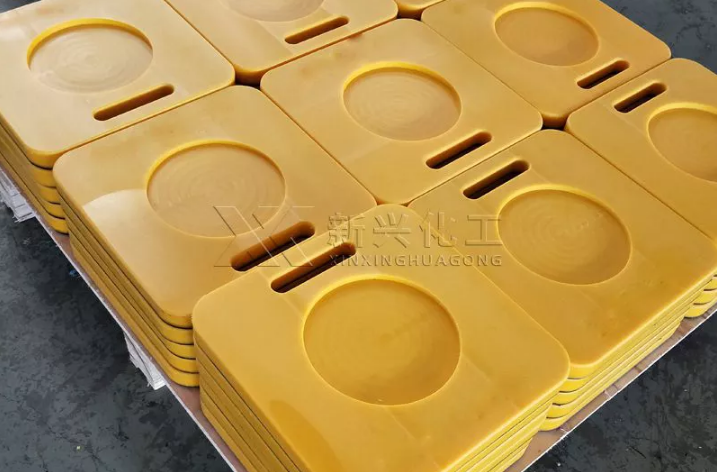Thumb Rules On How To Use Outrigger Pads In The Safe Way
What are Crane Outrigger Pads?
An outrigger pad is a solid block of engineered material used to distribute the weight of the equipment over a greater surface area. When used correctly, outrigger pads can help to avoid incidents caused outriggers sinking in to the ground.
Thumb Rules to Use Outrigger Pads
Safety is paramount when deploying outrigger pads. In rigging, there are safe and unsafe methods for their use. Depending on intuition or general rules of thumb isn't sufficient. To ensure safety, correct procedures must always be followed.
1. Follow The Government Regulations
The place to begin here is with government regulations. According to OSHA, safety is always a requirement. OSHA 1926.1402 states that, in all instances in which a crane or other lifting equipment is used, the ground on which the equipment is placed must be firm, sufficiently drained, properly graded, and able to support blocking, cribbing, and outrigger pads.
OSHA regulations primarily pertain to construction and industrial work. For activities beyond their scope, ASME B30.5 code is referenced. This code is government-approved and legally enforceable. It specifies that any blocking or pads used to support heavy equipment must possess adequate strength to support and transmit loads safely, without excessive settlement, shifting, or tipping.
This summary provides a basic overview of OSHA and ASME rules. For comprehensive details, refer to these documents online, as they provide essential information for ensuring safe lifting operations.
2. Understand the Working Load Limits
It is crucial to understand the working load limits of your crane outrigger pads, blocking, or cribbing. These limits specifically apply to the pads themselves and do not account for the strength or support of the ground underneath. Simply having outrigger pads strong enough for the load being lifted does not guarantee safe operation.
3. Make Some Calculations
Safe lifting operations require basic calculations, starting with determining the total force exerted during the operation. This force includes the combined weight of the crane, load, rigging equipment, and any additional accessories.
Next, calculate the required area to evenly distribute this load across your outrigger system. To do this, you need to know the ground pressure, typically measured in pounds per square inch (psi), which should be provided by the lift supervisor.
To find the necessary area, divide the total force by the ground pressure. Taking the square root of this result gives you the area that each of the four corners of your rigging system should cover for safe and stable operation.
Conclusion
Depending on the situation, your outrigger pads for cranes may suffice to support the load, while in other instances, additional blocking or cribbing beneath the pads may be necessary. It's essential to ensure proper support in either scenario.
If you have any questions regarding our outrigger pads or need assistance, please don't hesitate to reach out to us. Additionally, we offer a comprehensive range of rigging supplies, including slings, straps, blocks, and hooks at Mytee Products. If you can't find what you're looking for, feel free to contact us as we may be able to source it for you.

Comments
Post a Comment